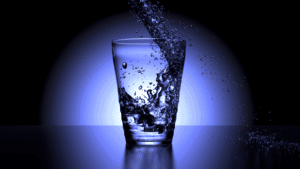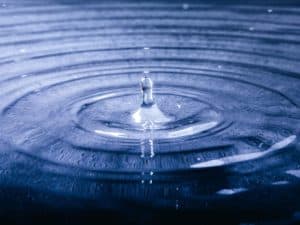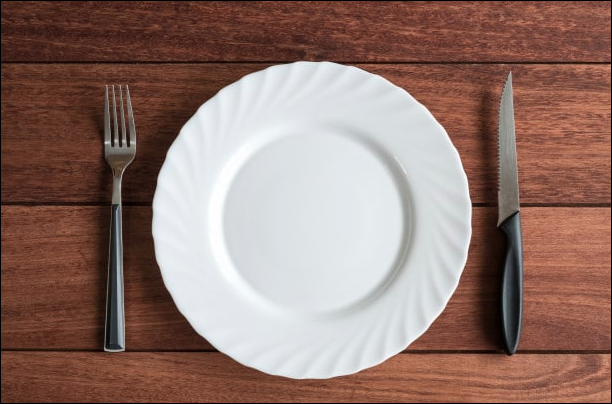Last Updated on November 9, 2023 by Fasting Planet
Hard Dry Fast vs. Soft Dry Fast: What’s the Difference?
When you fast, you may go the whole day without eating, or supplement your energy with only small meals. You probably sip on beverages as well, often water, but sometimes caloric drinks, too. Well, that is, unless you’re on a hard or soft dry fast. What are these two fast types and what’s the difference between them?
A soft dry fast is one where, while you don’t drink water, you can clean your face, shower or bathe, and brush your teeth using water. When on a hard dry fast, you can’t expose yourself to any water whatsoever for the duration of the fast.
In this article, we will expand more on both types of dry fasting, including a discussion of benefits. We’ll even share some tips for getting started on either a hard or soft dry fast, so keep reading. You won’t want to miss it!
What Is a Hard Dry Fast?
Before we can get into the differences between hard and soft dry fasting, we want to make sure you understand what a dry fast is. As the name implies, a dry fast is one where, on top of not eating food, you don’t consume any water, either. For that reason, these fasts are typically shorter than most, lasting about 11 to 16 hours.
There are two types of dry fasts, hard and soft. Since the whole point of a dry fast is to avoid water, hard dry fasters take that very seriously. When they fast, they won’t expose themselves to a single drop of water. That’s no water for brushing their teeth. They won’t shower or bathe, and they won’t clean themselves up with water. Only when the fast ends can they change that.
After all, when you do these activities, you risk getting water in your mouth. You’d probably swallow it without realizing, and that goes against the rules of a dry fast. This is a very strict type of fast, with hard dry fasts the strictest.

What Is a Soft Dry Fast?
The other option you have is a soft dry fast. The main difference between hard dry fasting and soft dry fasting is the latter gives you much more leeway.
Don’t get us wrong; there’s no room for intended, direct water consumption here. However, you’re allowed to run your toothbrush under some water and rinse with a cup of water when you spit. You can shower or bathe in water, and you can also use a soft, wet washcloth to clean your face.
Should you accidentally swallow some water, it’s not the end of the world. Again, you’re not trying to do that, but you don’t have to avoid water like it’s the plague on a soft dry fast.
Which Is Easier to Do?
Of the two types, we would certainly recommend a soft dry fast over a hard dry fast for beginners. You get a bit more freedom, which is important.
You may have intermittent fasted before, but you likely only cut food out of your diet, not fluids as well. Now that you’re doing that, you may find it tough at first, even if you only fast for 11 hours. Then, on top of that, you’ve got to stop doing most of your daily hygienic habits as well? It can be a lot of change all at once.
That’s why beginning with a soft dry fast is within your best interest. You can adjust to foregoing water and other beverages as well as food with fewer changes to your daily routine. That might make you more likely to stick with this intermittent fast and even repeat it again in the future.
Which Has More Benefits?
Dry fasting brings with it a slew of health benefits, among them the following:
- More fat burned: Your body may be mostly made of water, but when you fail to replenish that, like through a dry fast, interesting things can happen. For instance, your body will begin burning fat at a much speedier rate, up to three times faster. This happens because our fat contains water. To make metabolic water, something our bodies can do, we need lots of fat (100 grams). Of that amount, we get a good deal of metabolic water (110 grams). Metabolic water is produced at a lower rate (55 grams) with the same amount of carbohydrates (100 grams), leading to slower fat burning.
- Better metabolism: Speaking of your metabolism, you can possibly speed it up through intermittent dry fasting. You see, fasting can trigger a means of fat burning known as lipolysis. This hydrolyzes lipid triglycerides, making them into fatty acids and glycerol. Besides that, your growth hormone levels go up and your insulin down. Oh, and lipolysis can trigger the production of noradrenaline or norepinephrine. This hormone can torch fat while boosting your metabolism.
- Weight loss: Here’s an obvious benefit, but an important one nonetheless. When you fast intermittently and only cut out food, you limit the calories you consume. By eliminating both food and water as part of a dry fast, you restrict calories even further, accelerating weight loss.
- More cognitive function: This study in the 2017 edition of Neurology International focused on men and women taking a dry fast for the holiday Ramadan. There were 22 participants in all. These participants fasted for an entire month. When they did, they had more nerve growth factor (NGF), brain-derived neurotrophic factor (BDNF), and serotonin. NGF keeps our nerve cells healthy while BDNF is a brain protein that promotes the health of synapses and neurons.

Read more: Water Fasting vs. Dry Fasting: Which Should You Do?
Hard dry fasting is not necessarily more advantageous over soft dry fasting here and vice-versa.
Tips for Dry Fasting
If you want to experience the above benefits, then you’re going to soon begin a dry fast. However, you’re a bit nervous. It sounds difficult and you’d like to succeed. Luckily, we’ve got some tips for doing just that:
- As we said before, begin with a soft dry fast over a hard dry one. The latter is difficult enough for experienced fasters. Don’t put yourself into a losing situation by starting with the toughest fast possible. Instead, get some experience under your belt and then work your way up to a hard dry fast.
- Don’t expect to fast for 11 or 16 hours right out of the gate. Plan for a very short fast, maybe one that lasts four or five hours. Then fast for seven or eight hours, then nine or 10, and so on and so forth.
- Please don’t push your body too hard. Avoid the cardio-heavy, high-intensity workouts you usually do if you’re going to be dry fasting. If you must exercise at all during the fast, then stick to light activities like yoga and walking.
- Do your best to maintain your energy while on a dry fast. Don’t be surprised if you feel extra exhausted. You are depriving your body of all calories and energy, and that can drain you very quickly.
- Try to keep yourself busy. Since you’re only fasting for hours instead of days, by distracting yourself, it becomes easier to get through your dry fast. Before you know it, it’ll be over and you can say you did it!
Conclusion
A dry fast is one where you don’t drink water and avoid eating food. You can go on a soft dry fast, where you can shower, clean yourself up, and brush your teeth with water. Alternately, you can try a hard dry fast, where you can’t do the above activities.
Dry fasting is very beneficial, but it can be dangerous for those who are inexperienced. You might want to consider speaking with your primary care doctor or nutritionist before starting a dry fast. If you feel unwell in any way, then take a break and resume the fast another time. Good luck!

